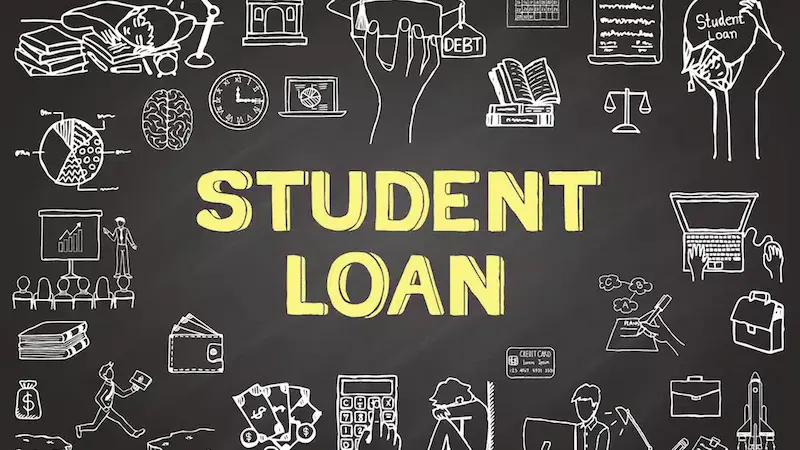Navigating Student Loans, Cosigners, and Financial Aid
Navigating the complex landscape of student loans, cosigners, and financial aid requires careful consideration and planning. As tuition costs continue to escalate, understanding these financial tools is vital for students and their families. This article aims to shed light on the key aspects of student loans, the role of cosigners, and the options available for financial aid.

Understanding Student Loans
Student loans are financial aids offered to students to cover the cost of their education. They can be categorized into two main types:
- Federal Student Loans: These loans are funded by the U.S. public sector and generally come with multiple borrower protections, such as flexible repayment options and interest rates that are often lower than private loans. The most common federal loans include Direct Subsidized Loans, Direct Unsubsidized Loans, and Direct PLUS Loans for parents and graduate students.
- Private Student Loans: These are offered by banks, credit unions, and other financial institutions. Since they are not public sector-backed, they can carry higher interest rates and fewer borrower protections. Private loans often require a credit check, making them less accessible for students with no credit history.
Key Considerations:
- Interest Rates: Federal loans have fixed interest rates, while private loans can have fixed or variable rates.
- Repayment Terms: Federal loans typically offer more flexible repayment plans compared to many private loans.
- Forgiveness Options: Certain federal loans offer forgiveness programs after a specified number of payments, which is usually not available with private loans.
The Role of Cosigners
In many cases, especially with private loans, a cosigner can make the borrowing process more manageable. A cosigner is someone who agrees to take on the responsibility of repaying the loan if the primary borrower is unable to do so. This is especially crucial for students who do not have a strong credit history.
Benefits of Having a Cosigner:
- Improved Loan Approval Chances: A creditworthy cosigner increases the likelihood of loan approval for students with little or no credit history.
- Lower Interest Rates: Borrowers with cosigners may qualify for lower interest rates due to the reduced risk perceived by lenders.
- Building Credit: For students, having a cosigner can help establish their credit history, provided the loan is paid on time.
- It's important to note that if the borrower defaults on the loan, the cosigner's credit can be negatively impacted. Therefore, both parties should communicate openly about financial responsibilities.
Exploring Financial Aid Options
Financial aid encompasses grants, scholarships, work-study programs, and low-interest loans intended to make education affordable.
- Grants and Scholarships: These funds do not require repayment and are often awarded based on financial need or merit. The Free Application for Federal Student Aid (FAFSA) is a crucial step in determining eligibility for federal and state financial aid.
- Work-Study: This federally funded program provides part-time job opportunities for students to earn money while studying, helping to alleviate educational costs.
- State and Institutional Aid: Many states offer financial aid programs, and individual colleges may also have scholarship opportunities for incoming students.
- Best Practices for Applying for Financial Aid:
- Submit the FAFSA as early as possible, as many colleges and states have limited funds.
- Research and apply for scholarships through schools, community organizations, and online databases.
- Keep track of deadlines and required documentation to ensure a smooth application process.
FAQ
Q: What is the difference between subsidized and unsubsidized federal loans?
A: Subsidized loans do not accrue interest while the borrower is in school or during deferment periods, whereas unsubsidized loans begin accruing interest immediately.
Q: Can a cosigner be removed from a student loan?
A: Yes, some lenders allow cosigner release after a certain number of consecutive on-time payments, provided the borrower meets specific criteria.
Q: What are the eligibility requirements for federal student loans?
A: Eligibility generally includes being a U.S. citizen or eligible non-citizen, having a valid Social Security number, and being enrolled at least half-time in an eligible program.
Conclusion
Understanding student loans, the potential necessity of a cosigner, and the various financial aid options available is essential for effectively managing educational expenses. Careful planning and informed decision-making can alleviate financial burdens and pave the way for academic success.
References
-

A Guide to Cost-Efficient Small Electric Cars for Seniors
-

Mastering Debt Consolidation: Boost Your Credit Score and Manage Interest Rates
-

Your Guide to Loans, Credit Checks, and Interest Rates
-

Affordable Independent Living: Finding the Right Senior Housing
-

Guide to Senior Living Apartments: Affordable and Comfortable Environments








